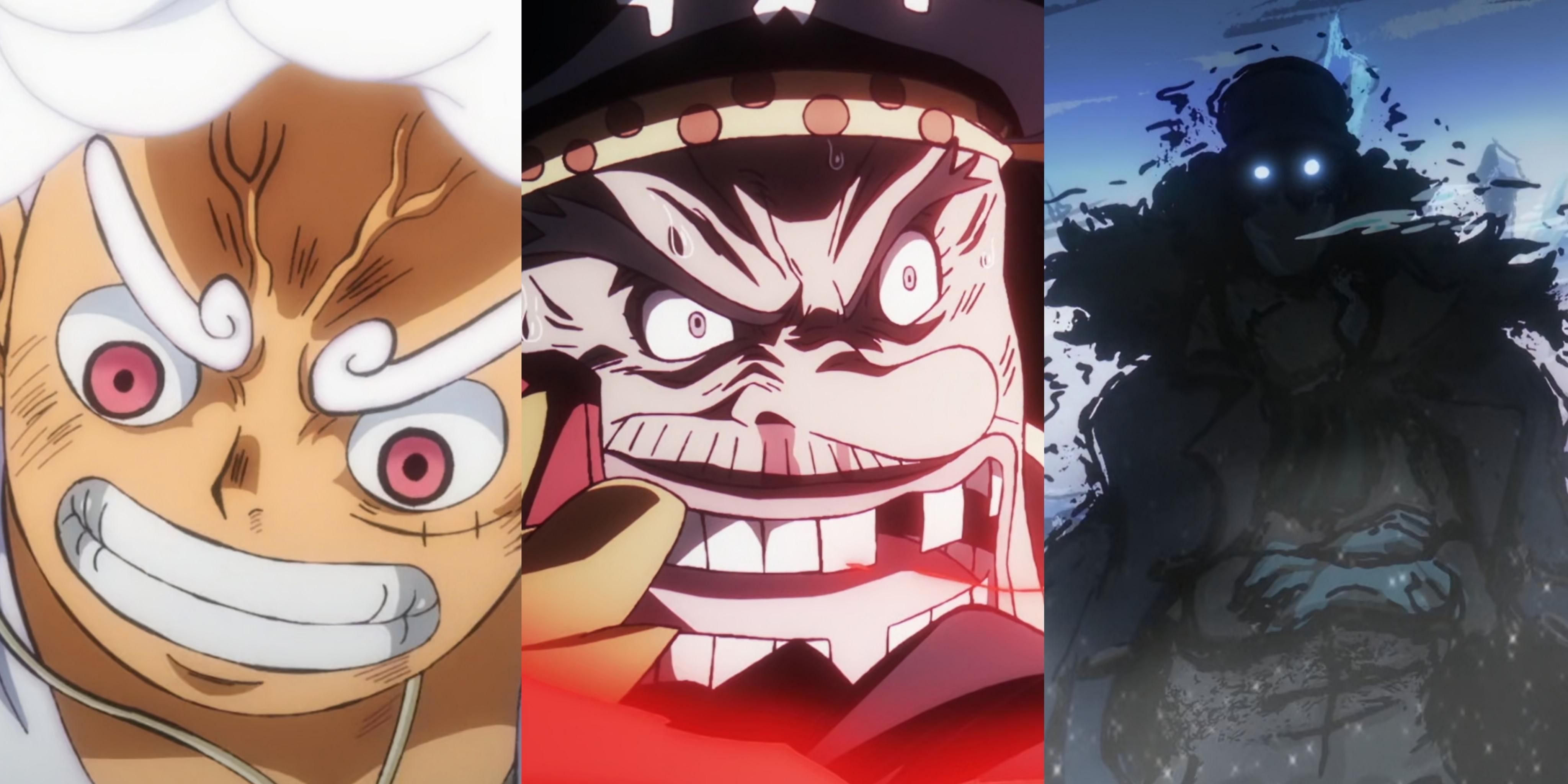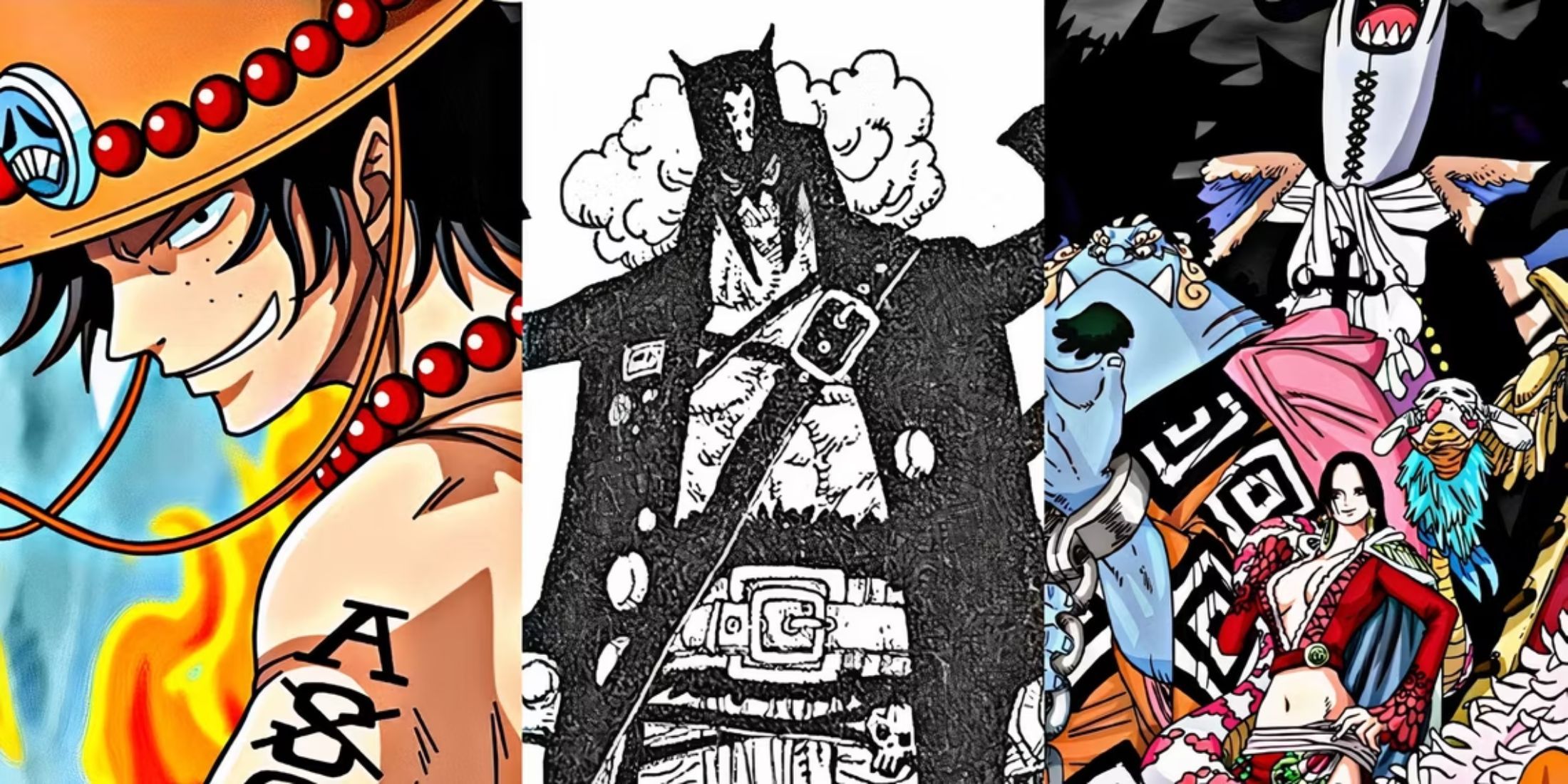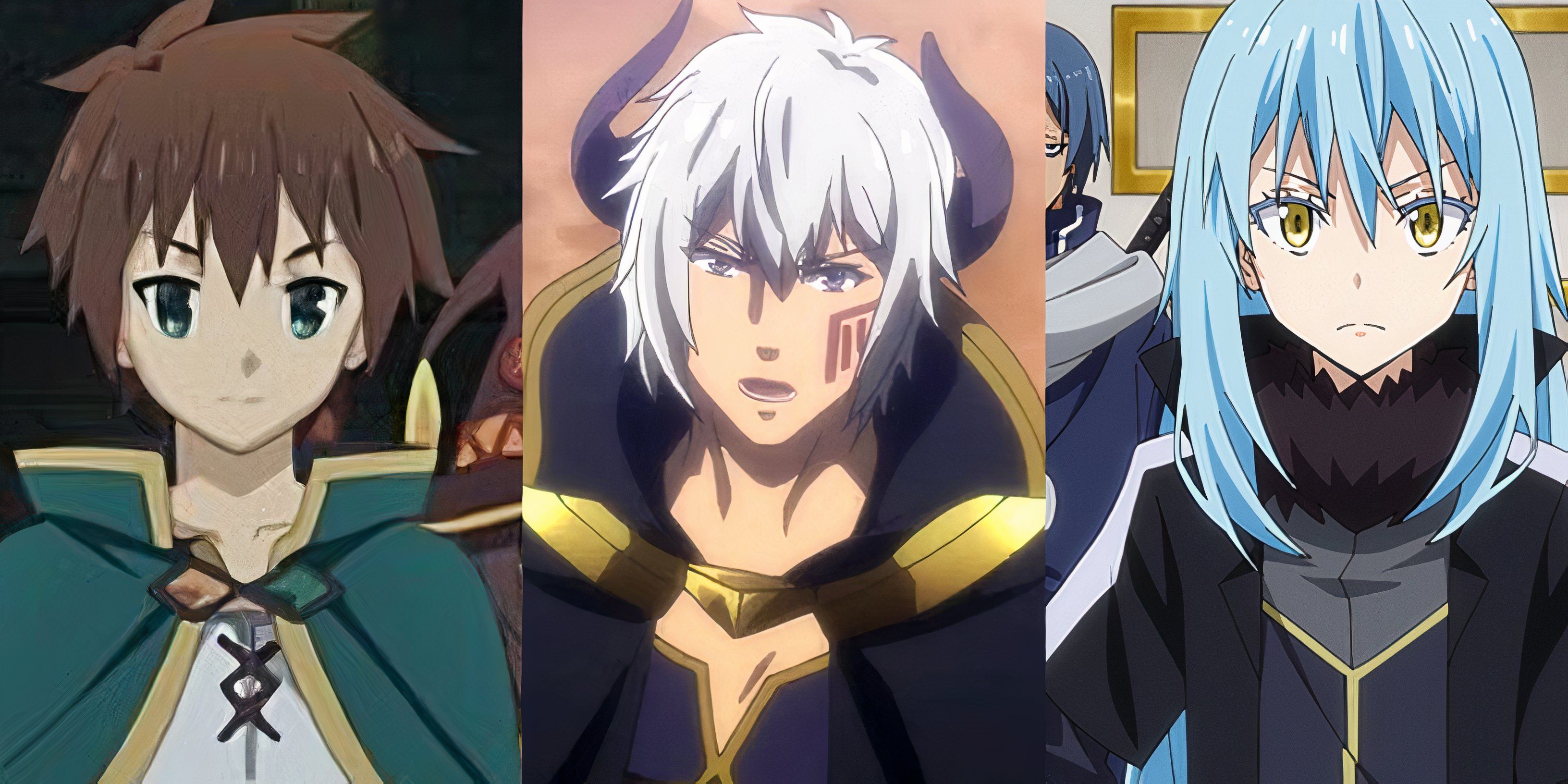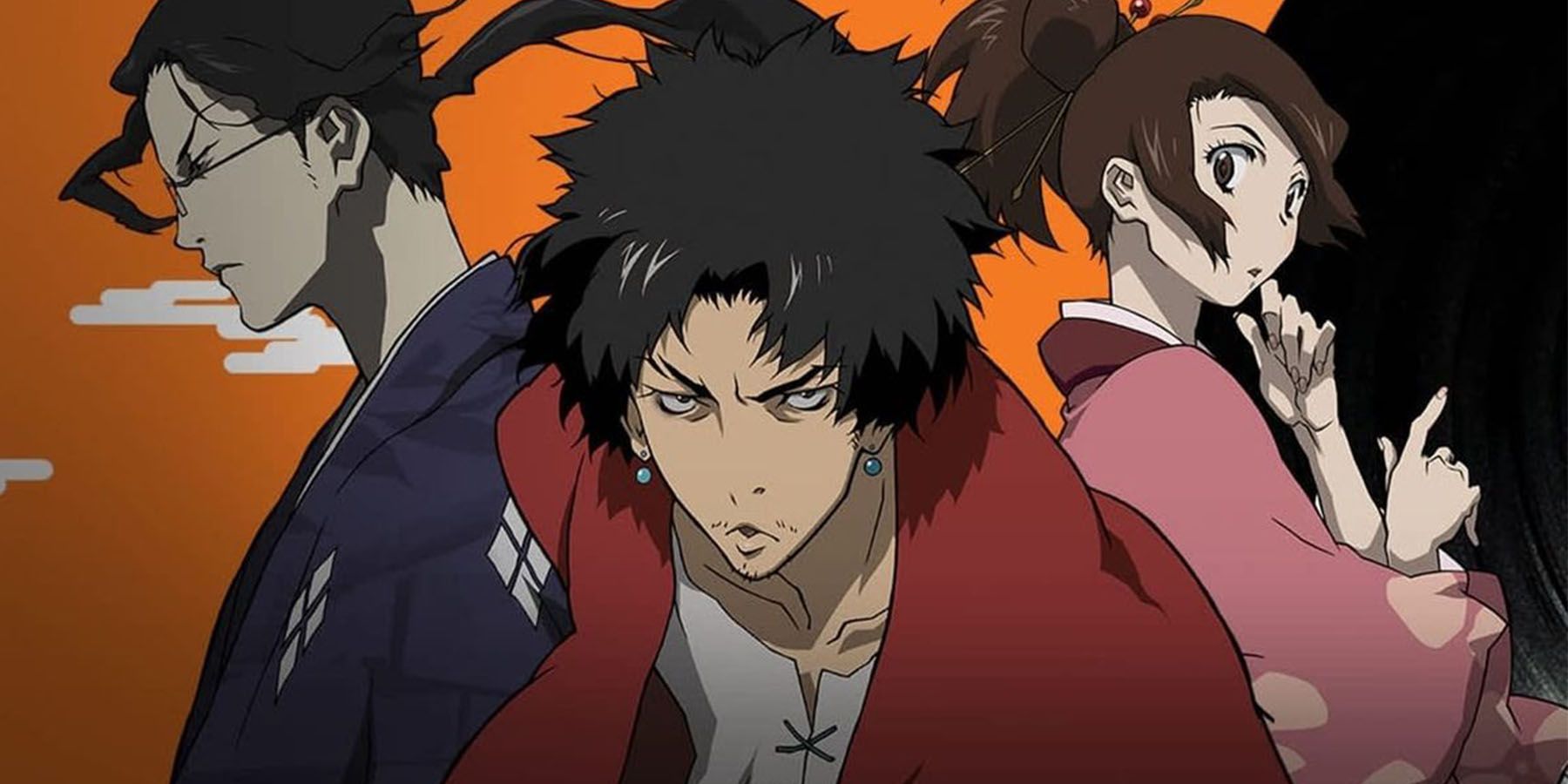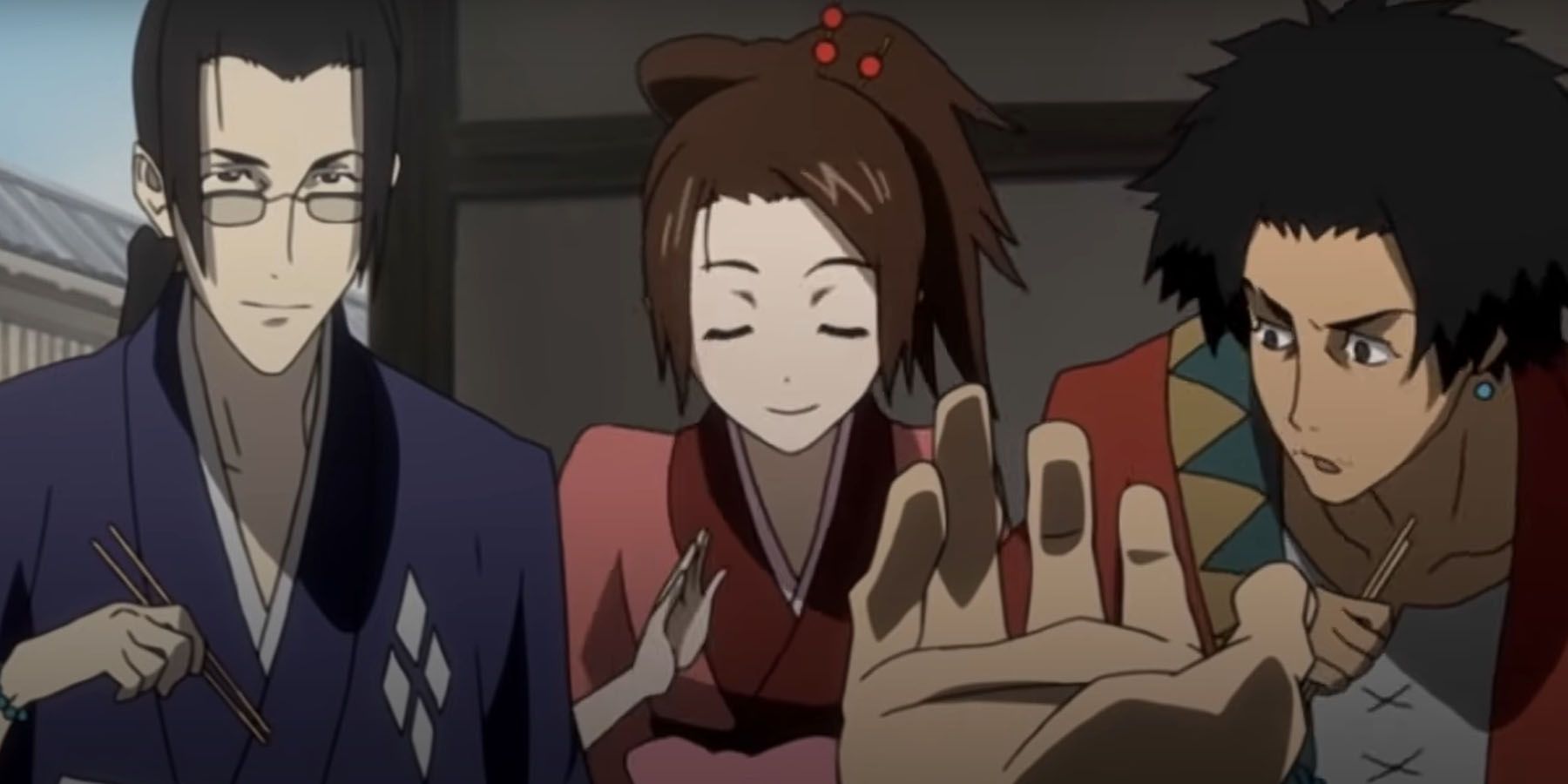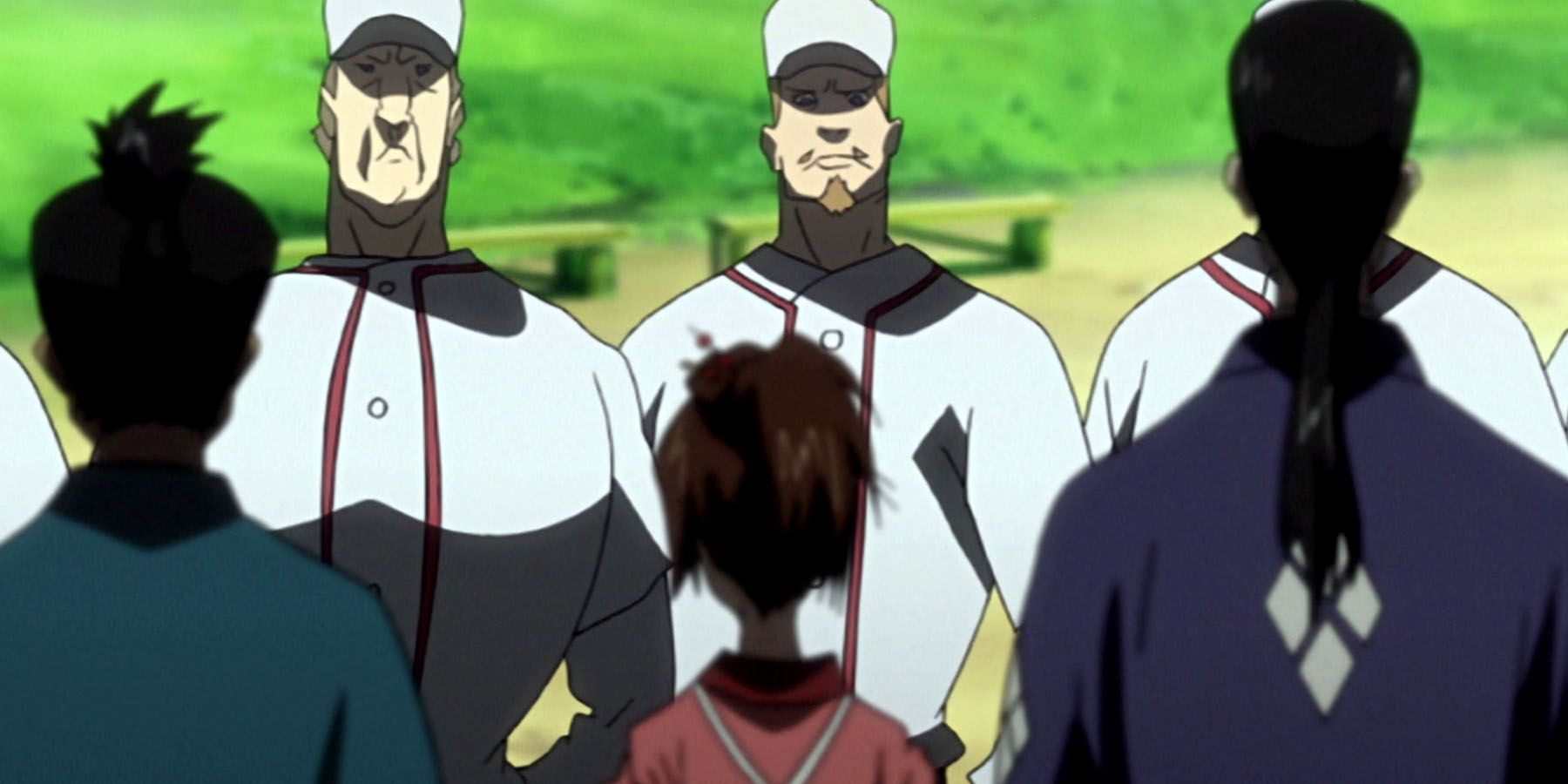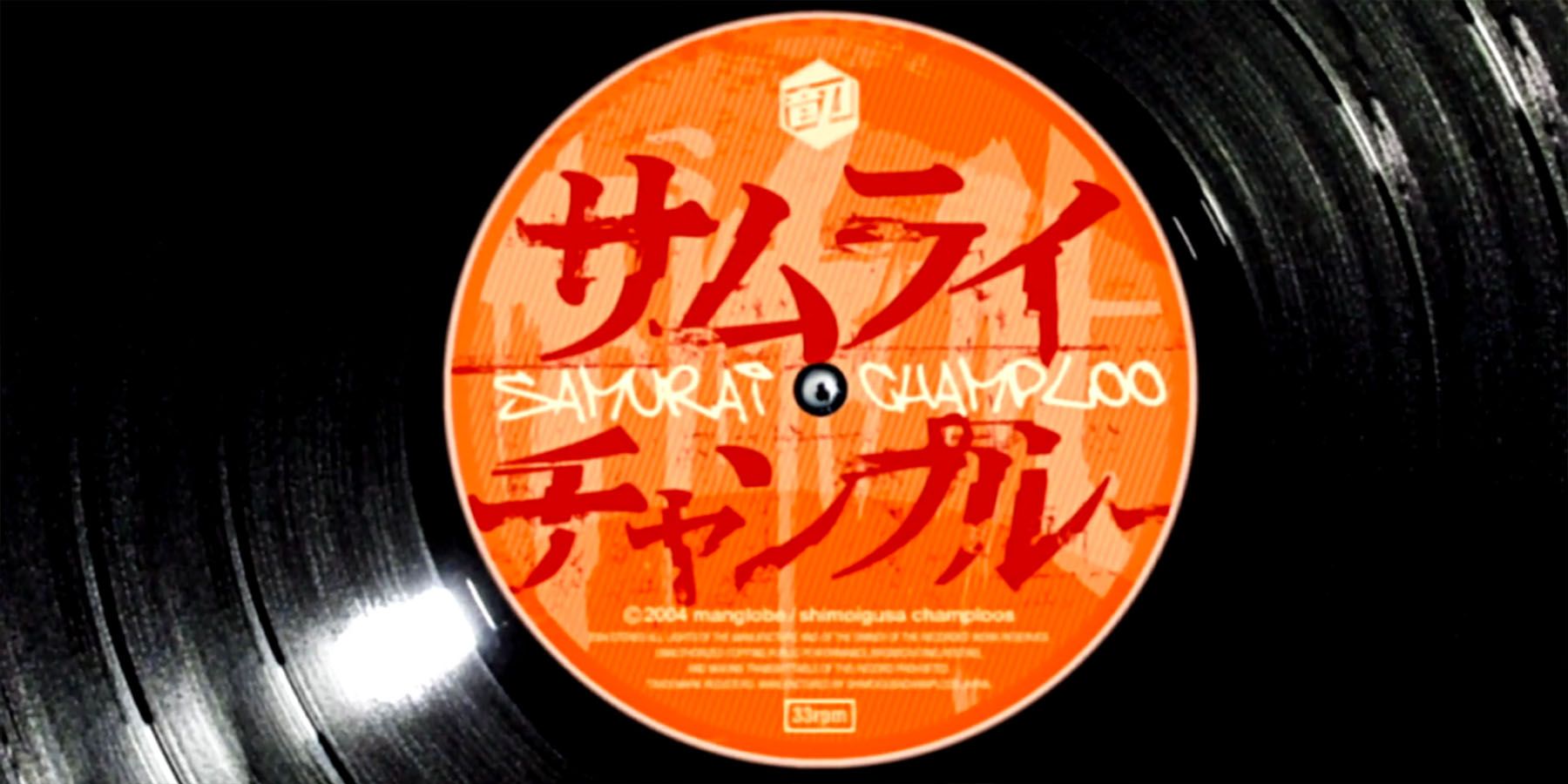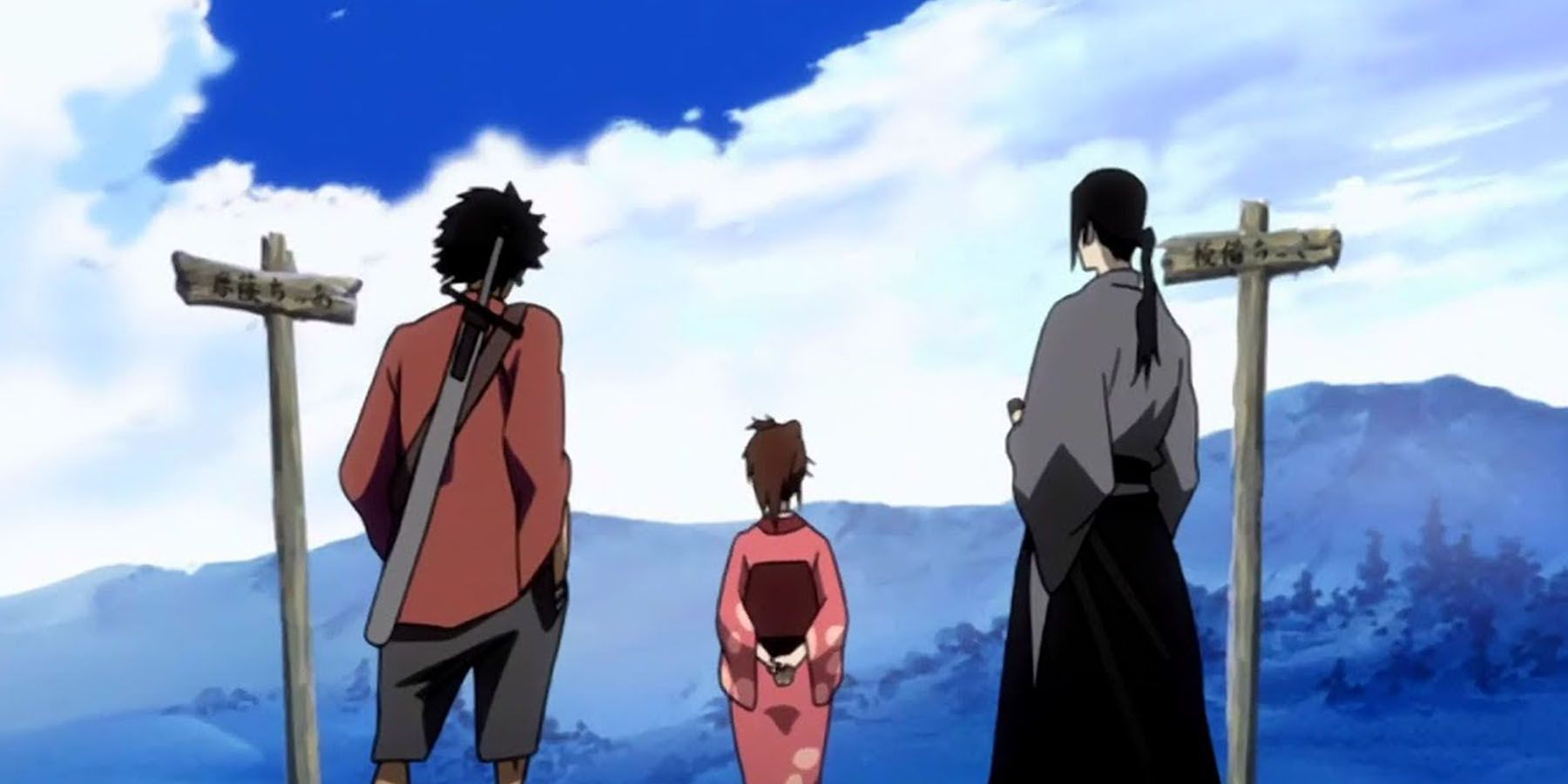Created and directed by none other than the one and only Shinichirō Watanabe, Samurai Champloo is set during an alternate version of Edo Japan (1603 to 1867) and follows Mugen, a mysterious rouge swordsman, Jin, a calm yet powerful ronin and Fuu, a young barmaid.
The anime ran for 26 episodes and aired between May 2004 to March 2005. The show features traditional elements blended with archaic cultural references and Hip hop, making it another one of Watanabe's unique genres after Cowboy Bebop.
The Story Begins
The story begins as Mugen walks into a rest house where Fuu is the barmaid and is being harassed by the town's governor's son and his cronies. Hungry and weary Mugen strikes a deal with the barmaid saying that he would save her in return for 50 dumplings. Eventually she gives in and Mugen takes on the cronies. During the fight, Jin walks in but is mistaken as one of the governors' bodyguards by Mugen, this begins another fight at the rest house between the two swordsmen and chaos ensued.
During their fight, a madman sets ablaze the rest house while Mugen and Jin battle inside, overwhelmed by the flames, the duo are eventually captured and trialed to be executed by the governor's men. While in prison the duo is approached by Fuu who strikes a deal herself with the two swordsman offering them their freedom but in return to join her on a quest to look for the "samurai who smells of flowers". They agree and make it out alive together and set about on their journey to find the so-called samurai.
Edo Japan
Although the show states that the anime is a work of fiction and is not an accurate historical portrayal of Edo Japan, the show contains many references to historical figures such as Fuu's confrontation with a painter who turns out to be based on Hishikawa Moronobu, an ukiyo-e painter and a distinguished and well-recognized artist of Japan's Edo period.
The show also speaks of a lone painter who held a deep admiration of an ukiyo-e painting he encountered in Paris, a painter who constantly painted sunflowers, that man was none other than Dutch Post-Impressionist painter, Vincent van Gogh. As sunflowers were a recurring image throughout the show it tied in brilliantly to the concept of this episode and the reference to historical happenings.
Another instance is a character based on "the father of modern baseball," Alexander Joy Cartwright Jr. We get our first glimpse of Joy Cartwright as he arrives in Japan with his fleet. His interpreter introduces him as Commodore Joy Cartwright and that they came to open trade with Japan.
Things take a bit of a heated turn as the community refuses to comply with the Americans resulting in a game of baseball to settle the altercation. The Americans try to bend the rules but ends up losing to Mugen in a comedic manner, who happens to be the last man standing during the baseball match resulting in a win for Japan. However, in order to keep the story fairly historically accurate, the narrator states the next time the Americans returned was in 1853 with Commodore Perry as the leader of the party.
Hip-Hop
The iconic factor that makes Samurai Champloo a unique show to watch is also the music incorporated into it. The instrumental Hip-hop beats and lo-fi music beautifully fits into the theme of the show. The music was created by the studio Manglobe and was produced by a team of four composers drawn from the Hip hop musical scene. One of them was Watanabe's long time friend - Shinji "Tsutchie", American MC/producer, Fat Jon, the late Japanese DJ/producer, Nujabes and Japanese Hip hop duo - Force of Nature. Watanabe selected the musical direction as part of his objective of mixing Hip hop culture with the anime's theme in Edo Japan, he also chose to feature guest artists such as Shing02, Minmi, Kazami, and Azuma Riki and many more. The opening theme song of the series - "Battlecry" was composed by Nujabes and co-written and performed by Shing02.
Watanabe wanted to ensure that the music was equally artistic as the anime and worked hard to make sure Samurai Champloo was a commercial success. Apart from the iconic openeing song - "Battlecry", the key ending theme song was "Shiki no Uta", also composed by Nujabes, accompanied by the lyrics and vocals of Minmi. In her mind, Minmi wrote the song to highlight about a sense of longing, seeking someone and holding onto hope despite never finding the person. This ties in perfectly with Fuu's life story and how she and her mother had survived without a father, and we also eventually find out that the "samurai who smells of flowers" was in fact Fuu's father. Although at the end of the series,Fuu finally finds her father lying on his deathbed, this prevents her from reconciling with him, and she leaves in anger after an emotional outburst. He is later killed by an assassin.
Conclusion
Samurai Champloo is a gem for viewers who love the essence of Hip-hop and Edo Japan. Unlike many anime series, Samurai Champloo did not emerge with a manga; rather, the manga was created after the anime but is not entirely based on it and has an original narrative based on the central characters. The ending of Samurai Champloo brings about a case of mixed emotions for the viewer. Although the journey is over for the viewer, it is far from over for the trio. As Fuu, Jin, and Mugen go their separate ways, it is a happy yet also depressing ending.From the adventures to the chaos they faced, the friendship and experiences forged with each other, the trio still are able to walk away from each other without the slightest hint of sadness.
Samurai Champloo is all about the journey and not the end. Although viewers may have expected a happier ending the anime is an interesting parable for how life works, and even the closest of friends must eventually walk their own paths someday. As the trio goes their own ways, the anime ends just like how it began: three strangers on their own paths to fulfill their heart's desire.

